Do you eat the right types of fiber? It’s doubtful! Here’s what to do
You probably don’t eat enough high-fiber foods. And even if you are, it’s doubtful you get all the types of fiber you need for weight management, blood sugar control, cholesterol lowering and more.
Here’s the 3-part bottom line right at the top.
- You probably need to eat more high-fiber foods. Only 1 in 20 people eat enough fiber.
- Not all fibers are the same.
- We need to eat a large variety of fiber-containing foods to get the benefits related to preventing cancer, heart disease, diabetes, bowel disease and more!
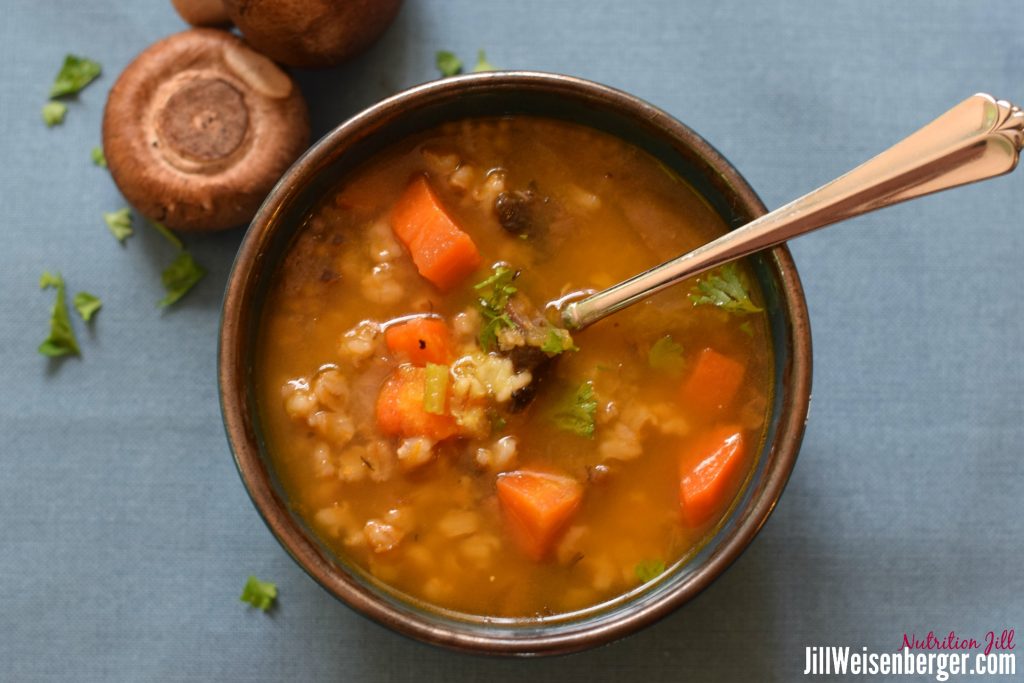
This mushroom barley soup gets its fiber from barley and vegetables
8 Things to Know about Fiber and High Fiber Foods
1. You probably need fiber more than you get
A mere 5% of Americans consume the recommended amount of fiber. The Adequate Intake is 25 grams daily for women and 38 grams for men. Older women should aim for at least 21 grams, and older men should aim for 30 grams or more daily. Sadly, the average daily intake is only 16 grams. To meet your goal, choose high-fiber foods with every meal.
2. You probably need more variety of fibers
We say fiber, but we really mean fibers. Plural. We cannot refer to fiber as a single nutrient. That’s like talking about vitamins as if they all had the same function. Just like there are several types of vitamins, there are several types of fibers. And they are not interchangeable.
And it’s more complicated than classifying them as soluble and insoluble.
Some fibers are viscous and thicken the contents of our intestines, which can help people with diabetes or prediabetes. Viscous fibers slow the entry of glucose into the bloodstream, and they help lower cholesterol levels.
Not all soluble fibers have these superpowers.
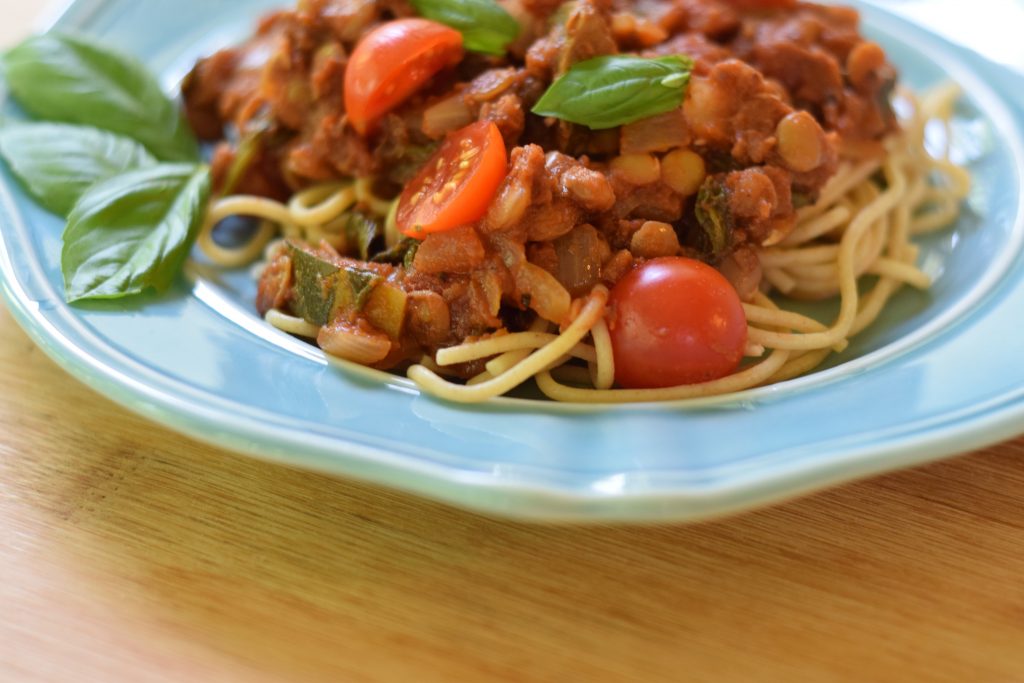
Veggie-Powered Pasta Sauce with Lentils. You’ll really like this recipe.
Other fibers are fermented in the colon by the good bacteria living there. Some fibers are fermented a little. Some get fermented a lot, and some are very resistant to fermentation. Fermentable fibers fuel the bacteria in your gut. Fiber is their primary energy source, and these healthy bacteria need a steady supply of food to thrive. Thus, we need to eat a steady supply of fermentable fibers.
Just as an aside, the healthy bacteria have lots of functions. They produce vitamins, help us absorb minerals, detoxify cancer-causing compounds, and activate cancer-fighting compounds and other health-boosting compounds. Additionally, during the fermentation process, bacteria produce short chain fatty acids (SCFAs), which have a host of benefits too, including protecting the colon cells and making you more sensitive to the effects of insulin. For lots more, check out How to throw a dinner part for your gut bacteria.
Still other fibers help in the bathroom by speeding up the the passage of stool and increasing the weight of the stool.
- bathroom helpers: bran fibers from various grains
- food for your gut bacteria: fibers in oats, barley, fruits and vegetables
- cholesterol and blood sugar helpers: viscous fibers in oats, barley, beans and lentils
3. Fiber is a type of carbohydrate
Only plants give us fiber. Get the various types in fruits, vegetables, grains, beans, lentils, nuts and seeds. This is one of the reasons my nutritionist heart breaks when I hear people fear-mongering carbohydrates. A diet very high in animal protein is typically – though not always – low in fiber. The fiber in carb-rich foods is just one reason that I say yes to eating carbs. Get answers to all your carbohydrate questions here.
4. High fiber diets are associated with better health
This feels like an under-statement! Here’s what we get:
- less type 2 diabetes, heart disease, and stroke
- less obesity
- better blood pressure
- reduced risk of diverticular disease
- less colon cancer from fiber in grains
- less cancers of the lung, mouth, pharynx and larynx from fibers in fruits and vegetables
And if you have prediabetes, you may start to fear carbohydrates, but individuals with the highest fiber intakes are 29 percent less likely to develop type 2 diabetes than those with the lowest intakes of fiber.
5. Some high fiber foods help manage hunger
I wish I could say it about every fiber, but it’s a myth that all fibers manage appetite. In a systematic review looking at the short-term effects of fiber on satiety and food intake, researchers identified only a handful of fibers that affected either increased satiety or decreased food intake at the next meal. And they studied 38 types of fiber.
A few that showed benefit:
- whole grain rye
- rye bran
- oats
- barley
- Fiber One cereal
- carrots
- resistant starch

Veggie-Packed Potato Salad has resistant starch from the cold potatoes and a variety of other fiber types. Check out my recipe for this healthy potato salad.
6. High fiber diets are associated with slightly lower body weights
The effect on weight is small, but still meaningful.
Maybe it’s related to appetite and satiety (as discussed above). Or maybe filling the plate with high-fiber foods means that there’s less room for calorie-packed choices. Or maybe people who eat lots of high-fiber foods work harder at eating healthfully and managing their weight. Regardless, a high-fiber diet does the body good.
7. Fiber supplements and foods fortified with fiber are okay
But they don’t substitute for eating a host of foods with naturally-occurring fiber. Consumed in excess, some added fibers cause painful gas and bloating. While this can happen with foods naturally high in fiber too, the likelihood is less, according to the Academy of Nutrition and Dietetics.
More importantly, by getting the fiber you need from a variety of foods, you get more fiber types, more vitamins, more minerals, more cancer fighters and on and on.
After aiming to meet your needs with a variety of foods, fill in the fiber gaps with fiber-fortified cereal, cereal bars and supplements.
8. You can get to your fiber goal by eating a few foods very high in fiber and lots of foods with a little fiber.
Even brewed coffee has a bit of fiber!
Here are a few foods with their fiber counts.
| FOOD | FIBER (g) |
|---|---|
| Baby carrots, 8 | 2.5 |
| Broccoli, 1 cup | 2.2 |
| Raspberries, ½ cup | 4.0 |
| Pear, 1 medium | 5.5 |
| Prunes, 5 | 3.4 |
| Raisin bran, 1 cup | 7.4 |
| Brown rice, cooked, 1 cup | 3.5 |
| Oatmeal, cooked, 1 cup | 4.0 |
| Kidney beans, 1 cup canned | 11 |
| Lentils, cooked, 1 cup | 15.6 |
| Almonds, ¼ cup | 4.0 |
Source: Position of the Academy of Nutrition and Dietetics: Health Implications of Dietary Fiber
Here are 8 things you need to know about fiber + 12 smart swaps to boost #fiber intake.Click To TweetHow to Increase Your Fiber Intake
If you’re like most people, you’d benefit by at least doubling your fiber intake. But take it slowly and drink plenty of fluids to minimize gas, bloating and discomfort. Grab some inspiration from these smart trades. For lots of reasons – not just for the fiber – it’s smart to eat fruits or vegetables or both at every meal and snack and to eat whole grains or pulses (beans, peas and lentils) at most meals.
| INSTEAD OF THIS | TRADE UP TO THIS |
|---|---|
| Cornflakes | Oatmeal |
| Apple or orange juice | Apple or orange |
| Omelet | Vegetable omelet |
| Cold cereal | Cold cereal topped with fruit |
| Turkey and cheese sandwich | Turkey and cheese sandwich loaded with veggies |
| Spaghetti and meat sauce | Whole grain spaghetti with a lentil-based meatless sauce |
| Potato salad | Veggie-packed potato salad |
| Rice | Quinoa, barley or whole grain rice mixed with another whole grain |
| Pretzels | Popcorn |
| Yogurt | Yogurt topped with muesli |
| Frozen yogurt | Berries topped with frozen yogurt |
| Cereal bar | Fiber-fortified cereal bar |
Just like vitamins work together to boost health, various fiber types do the same. It’s not enough to hit your goal of 25 or 38 grams. You need the entire spectrum of available fibers.
Cheers to fiber-filled eating!
Get more free tips to solve your everyday food and nutrition problems. No fads. No gimmicks. Just ideas for living your healthiest and feeling your best. You’ll get weekly emails and a guide to 5 common eating mistakes you need to stop right now.
Filed Under: Diabetes, Myth Busting, Nutrition, Prediabetes, Weight Loss
Tagged: blood sugar, carbohydrate, fiber, legumes
Jill Weisenberger
I'm Jill, and I believe simple changes in your mindset and health habits can bring life-changing rewards. And I don't believe in willpower. It's waaaay overrated. As a food-loving registered dietitian nutritionist, certified diabetes care and education specialist and certified health and wellness coach, I've helped thousands of people solve their food and nutrition problems. If you're looking for a better way to master this whole healthy eating/healthy living thing or if you're trying to prevent or manage diabetes or heart problems, you'll find plenty of resources right here.
Leave a Reply
11 Comments
Leave a Comment
Welcome to my Blog
Hi there! I'm Jill, a nutrition & diabetes expert and the author of 4 books.

I believe simple changes in health habits can bring you life-changing rewards.
And I believe willpower is way overrated.
Right here is where you can discover the mindset and habits to stick with healthy lifestyle choices most of the time - and drop the guilt when you don't.
Get the Second Edition!

Featured Posts
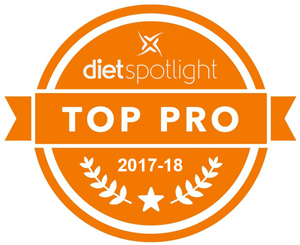
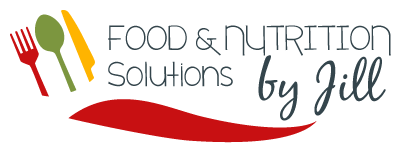


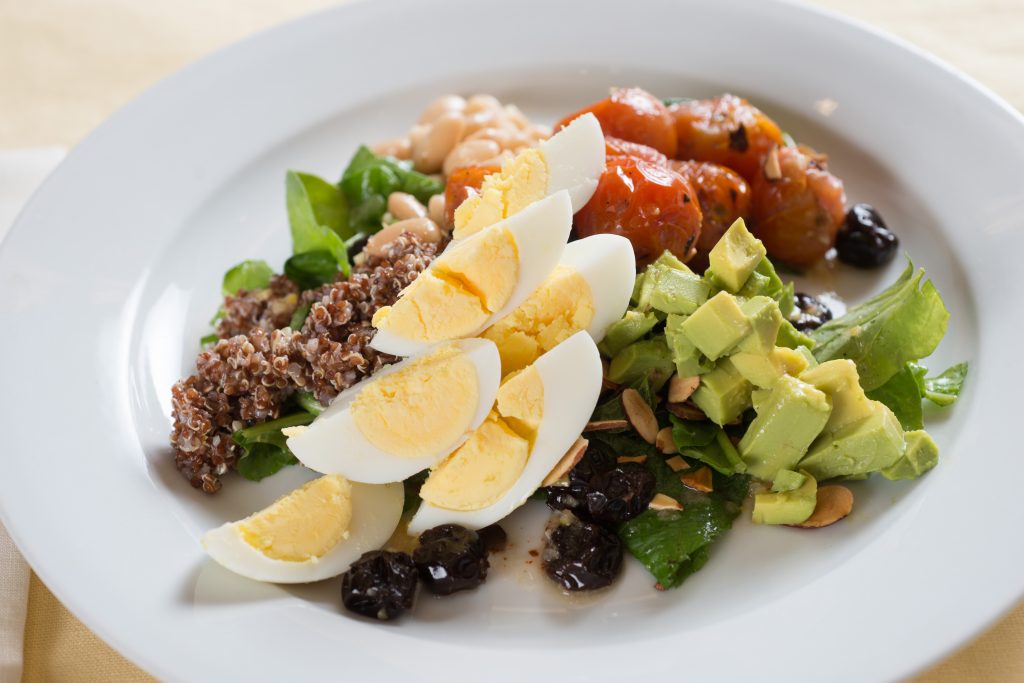



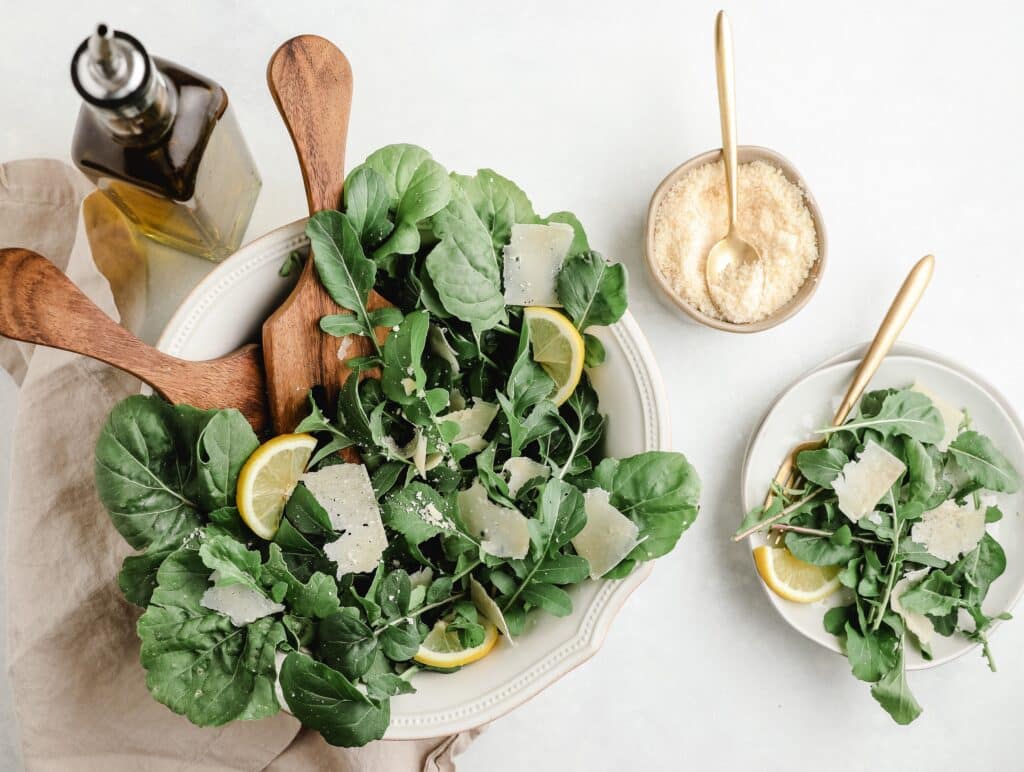
Jill – VERY GOOD straightforward article about the 100s of dietary fibers in our foods. Well done. So pleased you got to interview one of the dietary fiber gurus – Dr Julie Miller Jones. She’s one of my favorites!
Thanks Hope! She’s one of my favorites too because she knows how to explain science is easy language.
Instead of replacing potato, (although the replacement you suggested is good), I would use sweet potato for its low carb high fibre content. What do you think?
Thanks for your comment. I love both white potatoes and sweet potatoes. I know that white foods have a bad reputation, but I don’t think this is deserved. For example, the white potato is one of the least expensive sources of potassium, which is an important, yet under-consumed nutrient. Plus, white potatoes and sweet potatoes have very different flavors such that they can’t usually replace one another in a recipe without making other flavor adjustments. The bottom line for me is that they are both terrific, both nutritious – with different nutrient profiles – so they should both be enjoyed in healthful quantities and when prepared in healthful ways.
yummy dishes pictures and i need more recipes for more dishes.
Thanks! You can search my recipes to find some you like. The recipe for mushroom barley soup will be posted next week. There are lots of good recipes out there. I really enjoy the one’s Ellie Krieger does. Actually, I have lots of colleagues who put out terrific recipes. Let me know if there is something specific that you’re looking for.
Adding to the list, Brussels Sprouts and Flaxseeds are another great sources of natural food fiber!
Great post. Thanks for sharing such an informative post. It’s important to include food which are rich in fibre. I have also started taking Chia seeds because my dietian suggested it to increase my fibre intake and it is also helping me in weight loss. Now, I am looking foward to try your foods mentioned by you to increase the intake of fibre.
What a wonderful article . More than 95 % of Americans are deficient in fiber and that is primarily because of lack of education.
Timely advice since keto and low carb are daily published. Long term I believe a diverse fibre diet is best for my health. My microbiota, brain, blood sugar levels, inflammation will be better.
Yes, I agree. The least restricted diet tends to be the most wholesome and disease protective. So while low carb diets do produce weight loss, I think they lack so many phytonutrients and other health-boosting compounds.